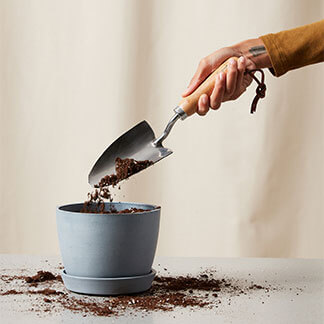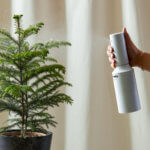Underwatering
A common reason indoor plants turn brown and crispy is that they are not receiving enough water. Lower leaves will usually be the first to dry out and will start to turn brown and become crispy to the touch.
Avoid underwatering your butterfly plant by watering it when 50% of the soil volume is dry. Be sure to soak the soil evenly and allow all the excess moisture to drain out through drainage holes. Constant underwatering can cause the soil to compact and creates large air pockets which will lead to uneven watering.
Overwatering
Roots can become soggy and develop root rot when watering plants too often. Root rot is dangerous to plants and is often fatal if left unchecked. Rotted roots can no longer soak up water to feed the plant. Ironically, this causes the plant to become dehydrated, resulting in browning and crisping leaf tips.
To avoid overwatering, feel the surface soil before watering. Always discard any excess water in the plant’s saucer after watering to discourage “wet feet.”
Root Bound
If your butterfly plant has been thriving but suddenly develops crispy brown tips, it might need repotting. This can happen when an indoor plant becomes root bound. Root bound conditions can happen when the plant has grown so many roots that there is no more room to expand. This shows the roots are taking up too much room in the current pot and there is not a balanced soil-to-root ratio. This inhibits your plant from taking up the proper amount of water and nutrients it needs. This leads to browning and crisping of leaves.
Over-Fertilizing
When a plant gets over-fertilized, the roots can become burned. Use an all-purpose fertilizer on your butterfly plant once a month during the growing season. You can dilute the fertilizer to half-strength to be cautious. Never fertilize on dry soil.










